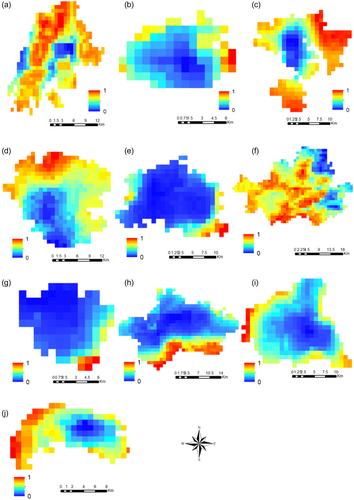Identifying pollinator-friendly sites within urban green spaces for sustainable urban agriculture
Abstract
Introduction
The relentless urban expansion has led to the depletion of forests and agricultural lands. Yet, pinpointing viable zones for urban agriculture, particularly concerning pollinator presence, remains a formidable task for city planners.
Materials and Methods
Our study introduces a novel methodology to identify optimal locations for cultivating pollinator-dependent crops. Leveraging species distribution models (SDMs), we generated habitat suitability maps for 243 pollinating insects, including bees (41 species), butterflies (140 species), and hoverflies (62 species) across South Korea. Subsequently, employing Graphab 2.8 software, we categorised 10 major cities in South Korea based on the connectivity of green space patches. Clusters exhibiting greater green space coverage, size, and connectivity displayed higher modularity values. Utilising ArcGIS software's zonal function, we computed key statistical parameters—minimum, maximum, mean, and sum values—of the pollinator taxa maps within each cluster.
Results
Our analysis unveiled a robust positive correlation between cluster modularity and the cumulative distribution of pollinators. Regions with heightened modularity exhibited richer pollinator populations, suggesting their suitability for urban agriculture for pollinator-dependent crops.
Conclusion
This study proposes that employing graph theory-based clustering of urban green spaces can effectively delineate areas conducive to urban agriculture. This strategic identification of green space clusters with optimal pollinator abundance holds promise for urban agricultural planning and sustainability initiatives.


 求助内容:
求助内容: 应助结果提醒方式:
应助结果提醒方式:


